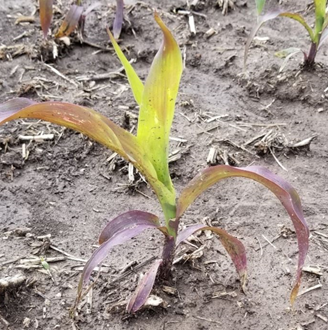With the wet conditions across much of our sales area, corn planting has been delayed significantly and the thought of planting soybeans has not been on many minds. Currently, Illinois, Missouri and Wisconsin are all significantly behind on soybean planting progress, at least 20% from the 2014-2018 average. Because of this delay there will be significant hurdles the soybean crop will face.
Weed Control: As many have observed, the weeds have not been as severely affected by the weather as cropping plans. With the wet conditions, much of the planned fieldwork remains to be completed along with preplant/burndown herbicide applications. This being the case, growers need to revisit herbicide programs whether that means maximizing herbicide rates or considering a more substantial spring tillage trip. The key is, as always, to start the growing season weed-free.
Also consider if the herbicide trait selected will have a viable option for a post-emergent herbicide trip. For Illinois growers this is especially important as the state has instituted a more stringent deadline to spray dicamba-based postemergence herbicides, limiting use to June 30 or prior, even if the growth stage restrictions have not been met.

Insect Control: We anticipate reduced foliar growth and with a reduced plant size many of your economic thresholds for pests will be reached much sooner than in a typical year. Because of this, it is important to be vigilant with scouting for pests this season to protect crop yields. Click here to download the Burrus Seed scouting calendar.
Seeding Rate: Yield in soybeans is a function of the number of nodes, and the pods on those nodes. With reduced vegetative growth of soybeans planted closer to June 21, it is important to ensure more nodes are available for pod production. Increased planting rate coupled with narrower rows can help promote increased plant growth and increase the number of nodes in the field to maintain yield later in the planting window.
Row Spacing: Reducing row spacing can also help speed canopy closure to help with weed control. With the anticipated reduced foliar growth, the crop will need help to spread across the space of the row allowing for better sunlight interception and increased biomass in the field.
Net Effective Stand Counts: Burrus Account Manager Ross Kleinsteiber explains how net effective stand counts can help advise your 2019 corn replant decisions.

The Purple Corn Blues: Burrus Field Agronomist Dana Harder explains the causes of those purple corn plants you are spotting and why there’s no need to worry. Click here to learn more.
Shifting Crops: Many growers are considering shifting from corn to soybeans, and with that shift you must ensure any herbicides that have been applied are compatible with the soybeans you are planting. Many of the corn broadleaf herbicides applied earlier in the season have an extended rotational restriction to soybean production, with some of the more popular HPPD herbicides being as long as 10 months.
Consider these added management challenges when planting your soybean crop and ensure you are maximizing the production of your farm.


 and then
and then